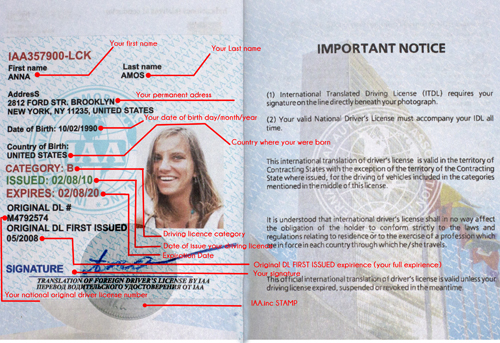Introduction
In today's digital age, technology plays an important role in the management of numerous elements of our lives. One location where technology has shown exceptional potential remains in the management of Internally Displaced Individuals (IDPs). The plight of IDPs frequently develops from dispute, natural catastrophes, or systemic discrimination, causing significant obstacles in supplying them with necessary assistance. This article explores how innovative innovations can assist address these challenges, enhance procedures, and improve the general management of IDPs.
Utilizing Innovation To Handle IDPs
The management of IDPs needs robust structures that can adjust to their evolving requirements. Using technology to handle IDPs makes it possible for organizations and federal governments to respond better by leveraging information analytics, mobile applications, and blockchain innovation. Through these tools, stakeholders can Get international driving license online supply much better services, track displacement trends, and improve interaction with afflicted populations.
1. Understanding the Principle of IDPs
Internally Displaced Persons (IDPs) describe individuals who have been forced to flee their homes but stay within their nation's borders. Unlike refugees who cross worldwide borders, IDPs deal with distinct obstacles related to legal securities and access to assistance. Comprehending these dynamics is essential for effective management.
1.1 The Causes of Internal Displacement
Internal displacement can stem from different factors:
- Armed Dispute: Continuous wars or civil discontent lead many individuals to leave their homes. Natural Disasters: Earthquakes, floods, and other catastrophes require neighborhoods to evacuate. Development Jobs: Infrastructure tasks may displace populations without appropriate settlement or resettlement plans.
1.2 The Impact of Internal Displacement on Communities
The results on displaced persons are extensive:
- Loss of Livelihoods: Numerous lose their jobs and ways of support. Psychological Injury: The experience of displacement can lead to psychological health issues. Social Fragmentation: Neighborhoods might end up being fragmented as households are separated.
2. Existing Obstacles in Handling IDPs
Managing IDP populations provides several challenges for federal governments and humanitarian organizations:
2.1 Lack of Precise Data
Without accurate data about the number and area of IDPs, it becomes challenging to assign resources effectively.
2.2 Inadequate Interaction Channels
Many displaced individuals do not have access to dependable info concerning offered assistance services or safe areas.
2.3 Coordination Amongst Stakeholders
Multiple companies often work separately; coordination is critical for reliable reaction efforts.
3. Function of Technology in Addressing Challenges
Technology uses solutions that can help get rid of these difficulties:
3.1 Data Analytics for Better Decision-Making
By utilizing data analytics platforms, companies can analyze trends in displacement patterns, helping them make notified choices about resource allocation.
3.2 Mobile Applications for Real-Time Info Sharing
Mobile apps can assist in interaction between displaced persons and help companies-- supplying updates on available resources or safe locations.
3.3 Blockchain Innovation for Transparency
Blockchain technology fosters transparency by safely recording transactions associated with assist circulation-- making sure that resources reach those who need them most.
4. Case Research Studies Demonstrating Efficient Use of Technology
Several efforts worldwide display how technology has effectively managed IDP crises:
4.1 The United Nations' Usage of Geographic Details Systems (GIS)
The UN utilizes GIS technology to map displacement patterns precisely; this aids in preparing interventions efficiently.
4.2 The Function of Social Media Platforms in Crisis Communication
Social media has actually shown invaluable for real-time updates during crises-- helping firms interact quickly with afflicted populations.
5. Strategies for Implementing Technology Solutions
To effectively apply technology in managing IDP scenarios:
5.1 Engaging Local Communities
Local neighborhoods should be involved in developing tech solutions; they understand their requirements best.
5.2 Making sure Accessibility
Ensuring that technological options are accessible to all sectors of the population is essential-- consider language barriers and literacy levels.

6. Future Patterns in Technological Solutions for Handling IDPs
As we look ahead:
6.1 Expert system (AI) Enhancements
AI could further enhance predictive analytics concerning displacement patterns-- assisting companies expect crises before they escalate.
6.2 Increased Partnership Across Borders
Global partnership could lead to shared databases and resources that improve responses throughout areas experiencing similar challenges.
7. Conclusion: A Call for Innovative Approaches
The management of Internally Displaced Persons requires a multi-faceted method including sophisticated technological options customized specifically for their needs-- making it important for governments and organizations alike to invest time and resources into these innovations.
FAQs
Q1: What ought to I do if I am an internally displaced person? A1: Look for support from regional NGOs or government firms committed to helping displaced people discover shelter and resources.
Q2: How does technology enhance interaction amongst aid agencies? A2: Innovation boosts details sharing through platforms that enable real-time updates concerning available services or modifications in conditions affecting IDPs.
Q3: Can I make an application for an international chauffeur's license online while being displaced? A3: Yes! Numerous nations use online services where you can look for a global driver's license even if you're presently displaced; simply examine your regional regulations!
Q4: What are some examples of mobile apps created for IDP assistance? A4: Apps like "Refugee Pal" deal information on available services while "Catastrophe Emergency situation" offers notifies throughout crises affecting your area!
Q5: How does blockchain guarantee transparency in help distribution? A5: Blockchain records deals securely so that every aid circulation is traceable; this reduces corruption dangers making sure resources reach those who require them!
Q6: Exist particular technologies being developed for usage in Spain concerning internal displacement? A6: Yes! Different regional NGOs are working together with tech companies to produce applications concentrated on aiding internally displaced people specifically within Spain's unique context.
In conclusion, utilizing innovation uses unmatched chances when handling Internally Displaced Persons successfully-- it's not simply about reacting faster however tailoring services that respect human self-respect while dealing with complex logistical difficulties head-on!